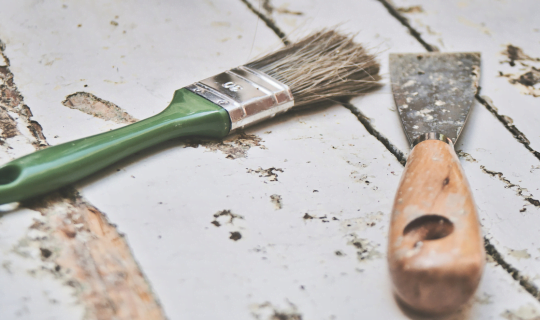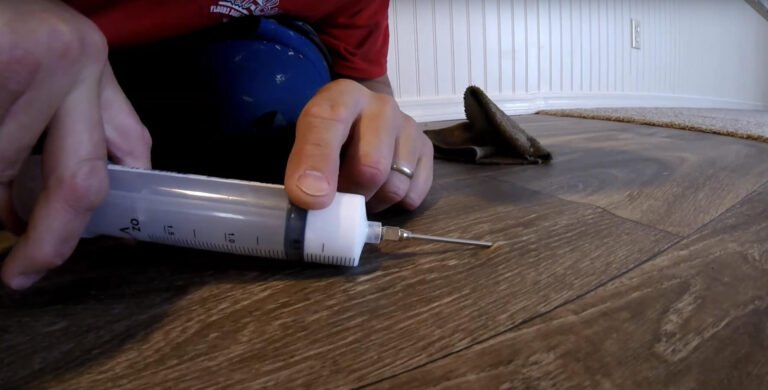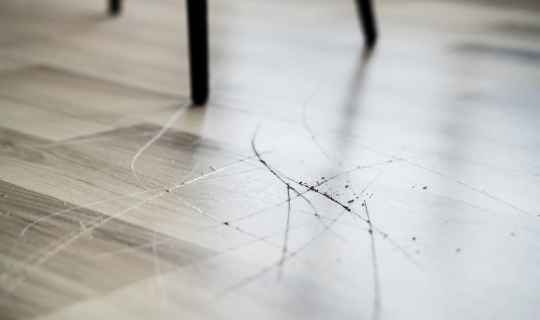Peel And Stick Vinyl Flooring: Your Comprehensive Diy Installation Guide
Discover the simplicity of installing peel and stick vinyl flooring. Our step-by-step guide makes it easy to revamp your space. Create a beautiful, durable floor that lasts for years.
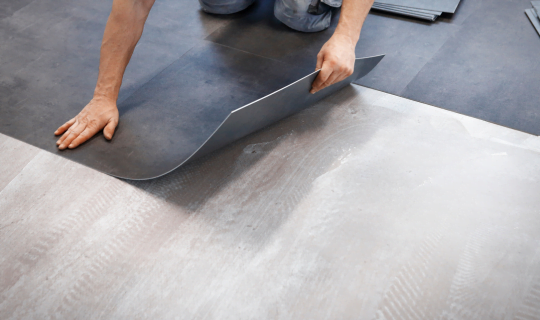
Peel and stick vinyl flooring is an economical and user-friendly DIY flooring solution. Made of polyvinyl chloride (PVC), it offers a durable, waterproof, and easy-to-maintain option for any room in your home. This comprehensive guide will delve into the world of peel and stick vinyl flooring, covering everything from its benefits and how to choose the best type, to installation tips and maintenance advice.
Key Takeaways
- Peel and stick vinyl flooring is an affordable and easy-to-use DIY flooring solution that is made of PVC and provides a waterproof and low-maintenance option.
- When selecting peel and stick vinyl flooring, factors such as room size and shape, foot traffic, and desired look should be considered.
- Preparation of the surface and following a step-by-step guide are crucial to a successful installation, especially when installing on concrete.
- Maintenance and care of peel and stick vinyl flooring include regular cleaning, avoiding wax or polish, and inspecting the flooring regularly. Proper removal and installation involve sealing seams with vinyl seam sealer.
Understanding Peel and Stick Vinyl Flooring
Peel and stick vinyl flooring, also known as self-adhesive vinyl flooring, is a type of resilient flooring that uses a pressure-sensitive adhesive backing. This design allows for easy installation, making it an ideal choice for both DIY enthusiasts and professional installers.
The process of installation involves peeling off the backing paper and sticking the adhesive side directly onto the subfloor. This eliminates the need for separate adhesives or glues, reducing the mess and complexity often associated with traditional flooring installations.
Peel and stick vinyl flooring comes in a variety of colors, textures, and styles, making it suitable for any room. Whether you’re looking to mimic the rustic charm of hardwood, the sleek elegance of stone, or the vibrant patterns of ceramic tiles, there’s a peel and stick vinyl flooring option for you.
Moreover, this type of flooring is water-resistant and durable, making it a great choice for high-traffic areas like bathrooms, kitchens, and hallways. It can withstand the hustle and bustle of daily life, from the pitter-patter of little feet to the constant movement of furniture.
Benefits of Peel and Stick Vinyl Flooring
One of the primary benefits of peel and stick vinyl flooring is its ease of installation. Unlike traditional flooring types that require professional installation, peel and stick vinyl flooring can be installed by anyone with a bit of time and patience. This makes it a popular choice for homeowners looking to undertake a DIY home improvement project.
In addition to its easy installation, peel and stick vinyl flooring is also quite affordable. It offers a cost-effective way to update your home’s flooring without breaking the bank. This is particularly beneficial for homeowners on a tight budget or those looking to renovate multiple rooms at once.
Despite its affordability, peel and stick vinyl flooring doesn’t compromise on style. It comes in a wide variety of designs, allowing you to customize your flooring to match your unique aesthetic. Whether you prefer a modern, minimalist look or a more traditional, rustic vibe, you’ll find a peel and stick vinyl flooring option that fits your style.
However, it’s important to note that the quality of the flooring may vary, and it may not last as long as other forms of vinyl flooring. This is because the durability of peel and stick vinyl flooring is largely dependent on the quality of the adhesive and the preparation of the subfloor. Therefore, it’s crucial to follow the installation instructions carefully to ensure a long-lasting and durable floor.
Choosing the Best Peel and Stick Vinyl Flooring
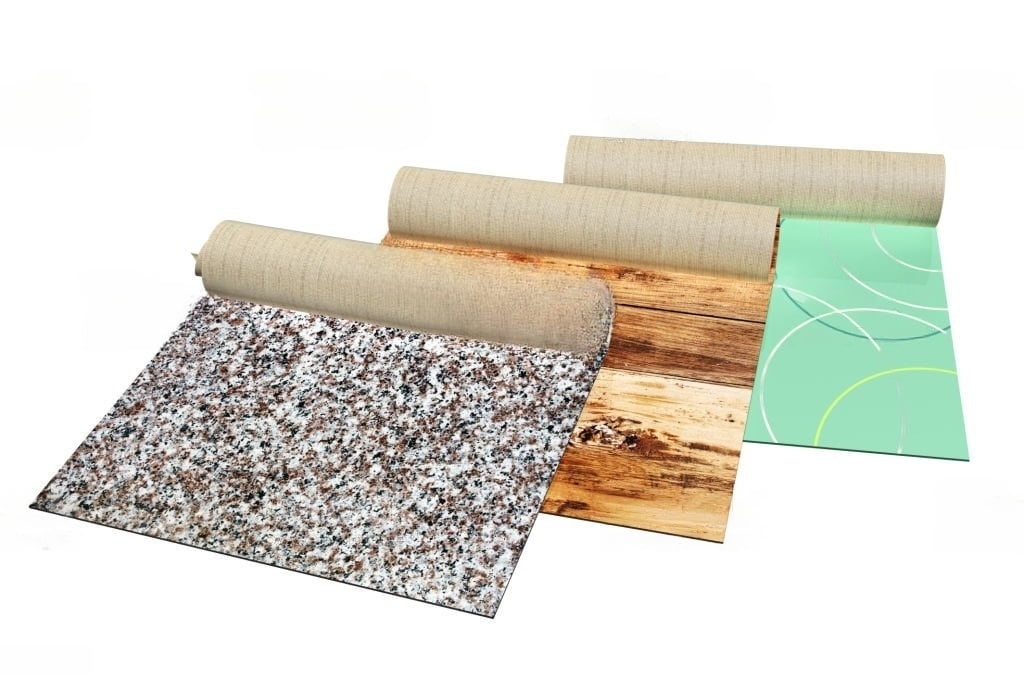
When selecting peel and stick vinyl flooring, there are several factors to consider. These include the size and shape of the room, the amount of foot traffic, and the overall look you desire.
- Size and Shape of the Room: The size and shape of the room can influence the type of peel and stick vinyl flooring you choose. For instance, larger tiles or planks can make a small room appear bigger, while smaller tiles can add visual interest to a large, open space. Similarly, the shape of the room can dictate the layout of the flooring. For example, diagonal layouts can make a narrow room appear wider.
- Foot Traffic: The amount of foot traffic a room receives can also impact your flooring choice. High-traffic areas like kitchens and hallways require durable flooring that canwithstand wear and tear. In such cases, you might want to opt for thicker vinyl flooring with a high wear layer. On the other hand, rooms with less foot traffic, like bedrooms or home offices, can accommodate thinner vinyl flooring.
- Desired Look: The overall look you want to achieve plays a significant role in your choice of peel and stick vinyl flooring. If you’re aiming for a rustic or traditional look, wood-look vinyl might be your best bet. If you prefer a modern or industrial aesthetic, you might opt for stone-look vinyl. And if you’re after a unique, eclectic look, patterned vinyl could be the way to go.
In addition to these factors, you should also consider the type of underlayment to use with the peel and stick vinyl. A cushioning underlayment can help with noise reduction and comfort, while a moisture barrier can help protect against water damage, especially in rooms like bathrooms and basements.
How to Install Peel and Stick Vinyl Flooring
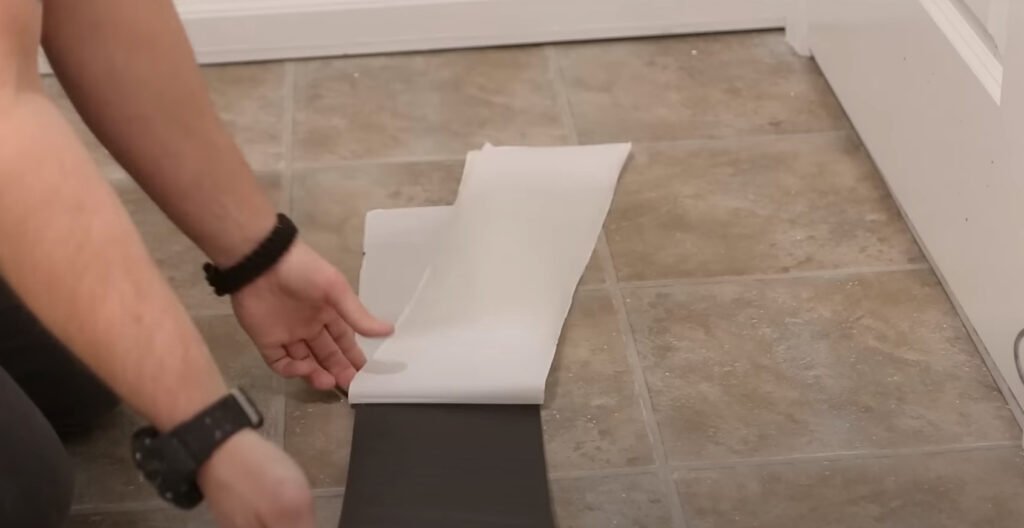
Installing peel and stick vinyl flooring is a straightforward process that requires minimal tools. Here’s a step-by-step guide to help you through the process:
- Prepare the Surface: The first step in installing peel and stick vinyl flooring is to prepare the surface. This involves cleaning the subfloor thoroughly to remove any dust, dirt, or debris. Any uneven areas should be smoothed out, as they can cause the vinyl to bubble or warp.
- Measure the Area: Next, measure the area where you plan to install the flooring. This will help you determine how much flooring you need. Remember to account for cuts and waste.
- Peel Off the Backing Paper: Once you’re ready to install, peel off the backing paper from the vinyl tile or plank. Be careful not to touch the adhesive side, as this can reduce its stickiness.
- Adhere the Vinyl to the Subfloor: Carefully place the vinyl onto the subfloor, pressing down firmly to ensure it sticks. Start from the center of the room and work your way out towards the edges.
- Seal the Seams: After all the vinyl has been installed, use a seam roller to seal the seams between the tiles or planks. This helps to create a more seamless look and prevents water or dirt from getting in between the vinyl.
Special considerations must be taken into account when installing peel and stick vinyl flooring on concrete. Concrete surfaces must be completely dry and free of any cracks or uneven areas. It’s also recommended to use a moisture barrier when installing over concrete to prevent any moisture from seeping through and damaging the adhesive.
Maintenance and Care for Peel and Stick Vinyl Flooring
Proper maintenance and care of peel and stick vinyl flooring are essential to preserving its life. Here are some tips to keep your flooring looking its best:
- Regular Cleaning: Regular sweeping and mopping can help keep your flooring clean and free of dirt and dust. Use a soft broom or vacuum for daily cleaning, and a damp mop for deeper cleaning. Avoid using harsh chemicals or abrasive cleaners, as these can damage the vinyl.
- Avoid Wax or Polish: Unlike other types of flooring, peel and stick vinyl flooring does not need to be waxed or polished. These products can actually damage the surface of the vinyl and cause it to lose its shine.
- Inspect Regularly: Regularly inspect your flooring for any signs of damage or wear. If you notice any loose tiles or planks, or any areas where the adhesive is failing, it’s important to address these issues promptly to prevent further damage.
- Know How to Repair: In the event of damage, it’s important to know how to remove and replace peel and stick vinyl flooring. This involves heating thedamaged tile or plank with a hairdryer to loosen the adhesive, then carefully peeling it off. A new tile or plank can then be installed in its place.
With the right preparation and attention to detail, peel and stick vinyl flooring can be a great choice for any home. It offers a balance of affordability, style, and durability, making it a versatile flooring option for any room. Whether you’re a seasoned DIY enthusiast or a first-time homeowner, peel and stick vinyl flooring can provide an easy and effective way to revamp your space.
Frequently Asked Questions
Conclusion
Peel and stick vinyl flooring is an excellent DIY flooring solution that offers a great balance of affordability, durability, and convenience. It is slightly more difficult to install than traditional flooring, but with the right tools, careful preparation, and a methodical approach, anyone can install it in their home.
Proper maintenance and care will ensure that your peel and stick vinyl flooring holds up to wear and tear and maintains its beautiful appearance for years to come. With the right preparation and attention to detail, peel and stick vinyl flooring can be a great choice for any home.

